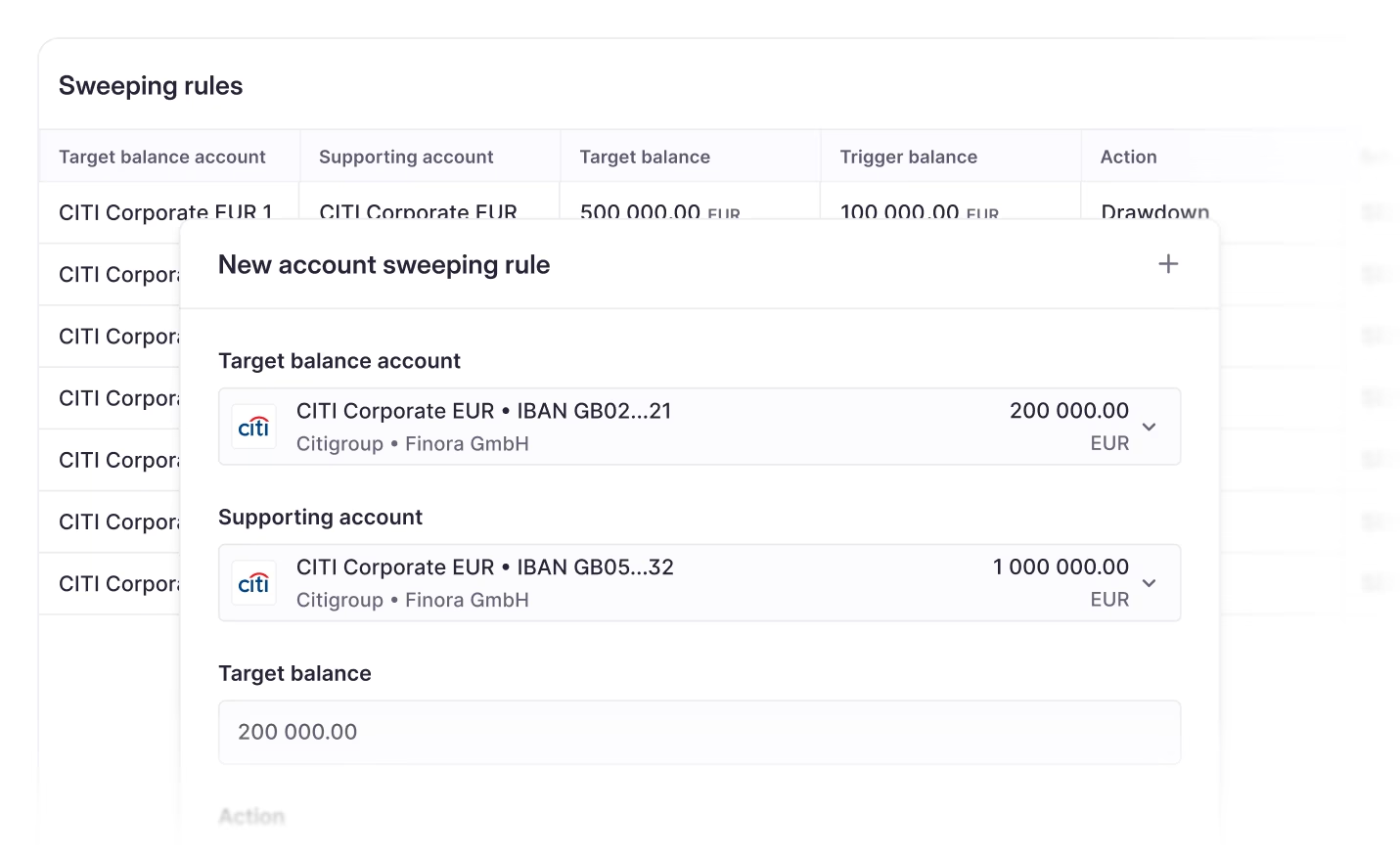What is the flow of funds?
Flow of funds describes the movement of money into, through, and out of an organization’s accounts as it conducts its financial operations.

Introduction to flow of funds
Understanding the flow of funds is fundamental to treasury and cash management. It maps how cash travels across a company’s ecosystem—from customer receipts and financing inflows to supplier payments, payroll, and other outflows. By tracking these movements, finance teams gain a clear picture of how cash is generated, distributed, and replenished over time.
A well-managed flow ensures liquidity is available when and where it’s needed, supporting operations while minimizing idle balances. It provides the foundation for accurate forecasting, efficient working capital management, and informed decision-making.
Mapping and monitoring fund flows is critical
- Liquidity Planning: It helps identify cash surpluses or shortfalls, allowing treasurers to plan funding or investment activities proactively.
- Operational Risk: Tracking movement between systems and entities reduces risk by detecting delays or bottlenecks early, strengthening internal controls and compliance.
- Organizational Transparency: Documenting the flow supports transparency across finance, accounting, and treasury, aligning data and reporting.
The components of fund flows
Every company’s flow of funds connects three main areas: inflows, internal movements, and outflows.
- Inflows represent cash entering the business (e.g., customer payments, loan proceeds, equity injections).
- Internal movements are the transfers of funds between accounts or entities (e.g., intercompany loans, cash pooling, sweeping). These balance liquidity and position cash for effective use.
- Outflows refer to all outgoing payments (e.g., supplier settlements, payroll, taxes, and debt repayments).
These three categories capture the full lifecycle of cash circulating through the organization.
Flow of funds in treasury management
In treasury, fund flow is closely tied to cash positioning, forecasting, and liquidity planning. Treasury teams monitor how daily operations affect group cash balances—how inflows replenish, outflows draw them down, and internal transfers rebalance liquidity.
Modern treasury systems automate this process, aggregating real-time bank and ERP data for a consolidated view. This automation allows for faster decision-making, more accurate forecasts, and proactive liquidity management across entities and currencies.
Flow of funds in practice
A typical example can be seen in the life cycle of a supplier payment. Customer receipts flow into a collection account, from which funds are moved (sometimes via internal transfers or sweeps) into operational accounts for disbursements. Payments are then initiated and executed, marking the outflow of funds.
By monitoring this end-to-end movement, treasurers gain insight into the net cash impact, timing, and direction of each flow. This helps forecast future positions, plan funding needs, and ensure every transaction is accurately reflected across systems.
How Atlar can help with flow of funds
Atlar provides real-time visibility into the flow of funds across all connected banks and entities. By aggregating balances and transactions in one platform, finance teams can trace every inflow, transfer, and outflow in a unified view. Automated reconciliation and ERP integrations ensure each movement is accurately recorded, while real-time dashboards show how cash moves across the organization at any moment.
With Atlar, treasurers gain full transparency over how money flows through their business—reducing manual work, improving accuracy, and strengthening liquidity control. Want to see how this works in practice? Book a demo to explore Atlar in action.
You can unsubscribe anytime.
Further reading
See Atlar in action.
Enter your work email to watch a live product demo.


